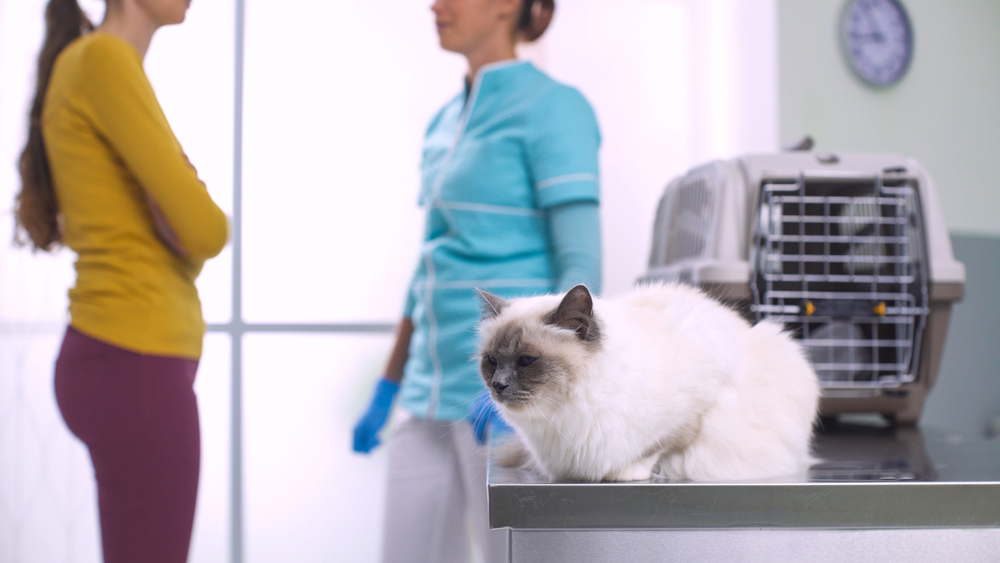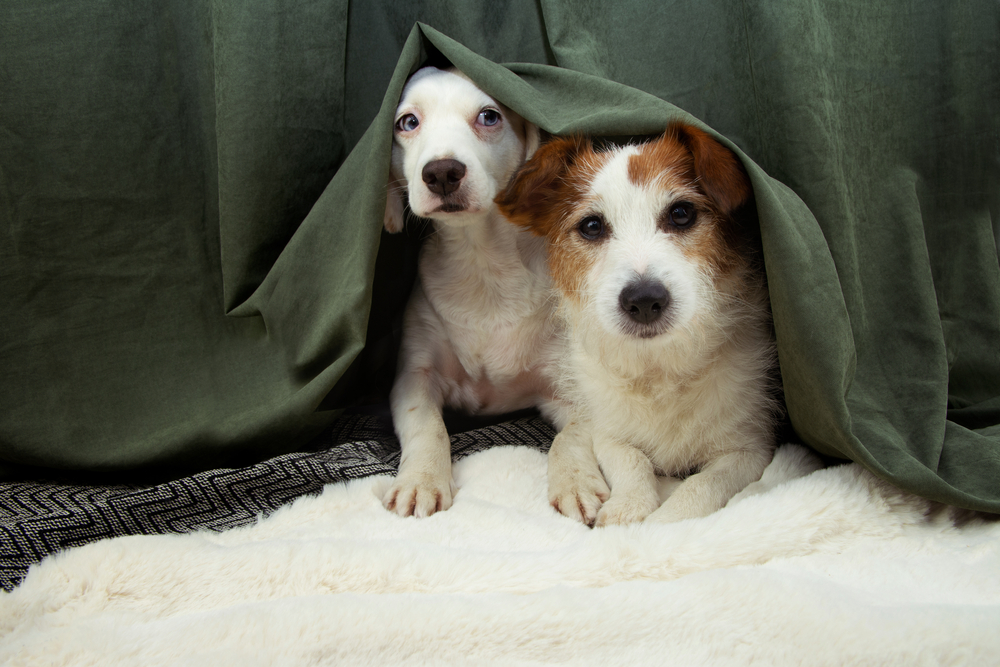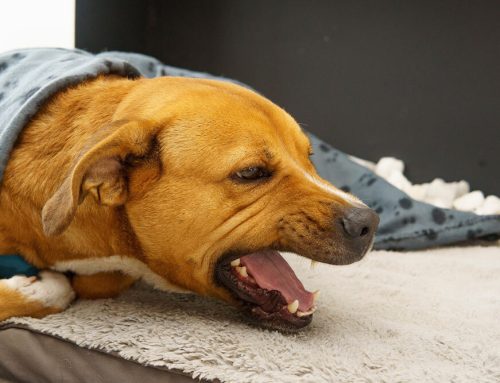Noise sensitivity (i.e., aversion or phobia) is a relatively common condition in pets. According to one dog owner survey, at least two-thirds of dogs are fearful when they hear a loud noise. And, while some pets quickly rebound from their initial fight-or-flight response, others suffer from a pronounced, and sometimes prolonged, overreaction similar to a human panic attack.
Fortunately, many small but effective ways can help these pets cope with their noisy and sometimes unpredictable surroundings and live a normal, comfortable life.
#1: Talk to your veterinarian
Exaggerated fear, stress, or anxiety before, during, and after loud noise events, such as thunderstorms, fireworks, heavy equipment sounds (e.g., trash truck), or noisy household appliances (e.g., vacuums, smoke detectors, blenders) are not normal in pets. And, their heightened stress state caused by noise aversion can put them at risk for serious injury, self-harm, or chronic illness, and can progress to generalized anxiety that affects their everyday life, if left untreated.
If your pet struggles to cope with loud noises, schedule an appointment with their Animal Medical Hospital of Naples veterinarian to discuss potential treatment options, such as medication, supplement, and behavior modification.
#2: Stay alert for noise events that may upset your pet
Minimizing your pet’s exposure to loud or upsetting stimuli can help stop their condition worsening, or at least slow progression. Protect your pet from noisy stimuli by avoiding loud events (e.g., fireworks displays, concerts, sports games, and parades) and staying attentive to weather forecasts to anticipate thunderstorms during storm season.
For unavoidable or unexpected noise events, the following steps can comfort your pet and reduce their exposure:
- Stay calm and reassure your pet — Although watching your pet’s fearful reaction is distressing, you must try to stay calm and neutral during noise events. If your pet senses your nervousness or stress, they will likely become more upset and increase their injury risk. Despite previous claims, reassuring your nervous pet with gentle praise and petting will not reinforce their fear, so go ahead—tell your four-legged friend everything will be OK.
- Give your pet a safe place to escape the noise — Designate a small room or area in your home as your pet’s safe zone during noise events. Ideally, this space should be interior-facing, away from windows or external doors. Not only do pets feel safer in small enclosed den-like spaces, but also their risk for escape or accidental self-harm is reduced.
Play with or feed your pet in their safe place during quiet times so they develop positive emotions. Then, when you anticipate a loud event, take your pet to their safe space before the noise begins.
- Use therapy wraps and shirts to comfort your pet — Therapy wraps and shirts can help some noise-averse pets. These products and techniques work by applying gentle but constant pressure to the pet’s chest and torso, similar to swaddling, that creates a natural calmness. Therapy wraps can be purchased or made at home and can be applied whenever your pet needs reassurance (e.g., veterinary visits, car travel, grooming).
- Reduce anxiety with music and calming pet pheromones — We live in a noisy and unpredictable world, but fortunately, a few portable techniques can help you create a calm, safe environment for your pet, no matter how far you are from home.
-
- Classical music — Studies show that certain melodic frequencies and patterns found in classical music often soothe pets.
- White noise — White noise cancels out unpleasant stimuli and can help pets relax.
- Calming pheromones — Pheromones are natural chemical messages that pets use to mark territory and communicate. When applied to your pet’s environment (e.g., bedding, bandana) synthetic pheromones (e.g., Feliway for cats, Adaptil for dogs) create a calming effect and help pets feel safe.
- Provide your pet with positive distractions — Positive distractions, such as food-stuffed hollow toys, lickable mats, and puzzle games, can not only take your pet’s mind off of unpleasant sounds, but also help them feel better from the inside-out.
Licking, eating, and seeking behaviors (e.g., hunting for a hidden treat or toy) activate positive areas in the canine or feline mind and release endorphins (i.e., feel-good hormones). Circulating endorphins promote natural relaxation, calmness, and pleasure.
Ensure your pet’s safety by monitoring their play and periodically inspecting toys for damage.
#3: Work with a veterinary behaviorist or skilled trainer

Training is the best method for reducing or eliminating your pet’s noise aversion, although the process can be lengthy and must be carefully controlled. Behavior experts use a strategy called desensitization and counterconditioning (DS/CC) to reduce your pet’s overreaction to trigger sounds and create a new and positive response. Because this process requires consistency and patience, we recommend consulting a veterinary behaviorist or a DS/CC-experienced positive reinforcement pet trainer.
Noise aversion can make pets feel trapped and vulnerable. Help your pet find freedom, comfort, and peace by asking your Animal Medical Hospital of Naples veterinarian about noise aversion therapies and management. Contact us to schedule an appointment with our Fear Free Certified team.







Leave A Comment